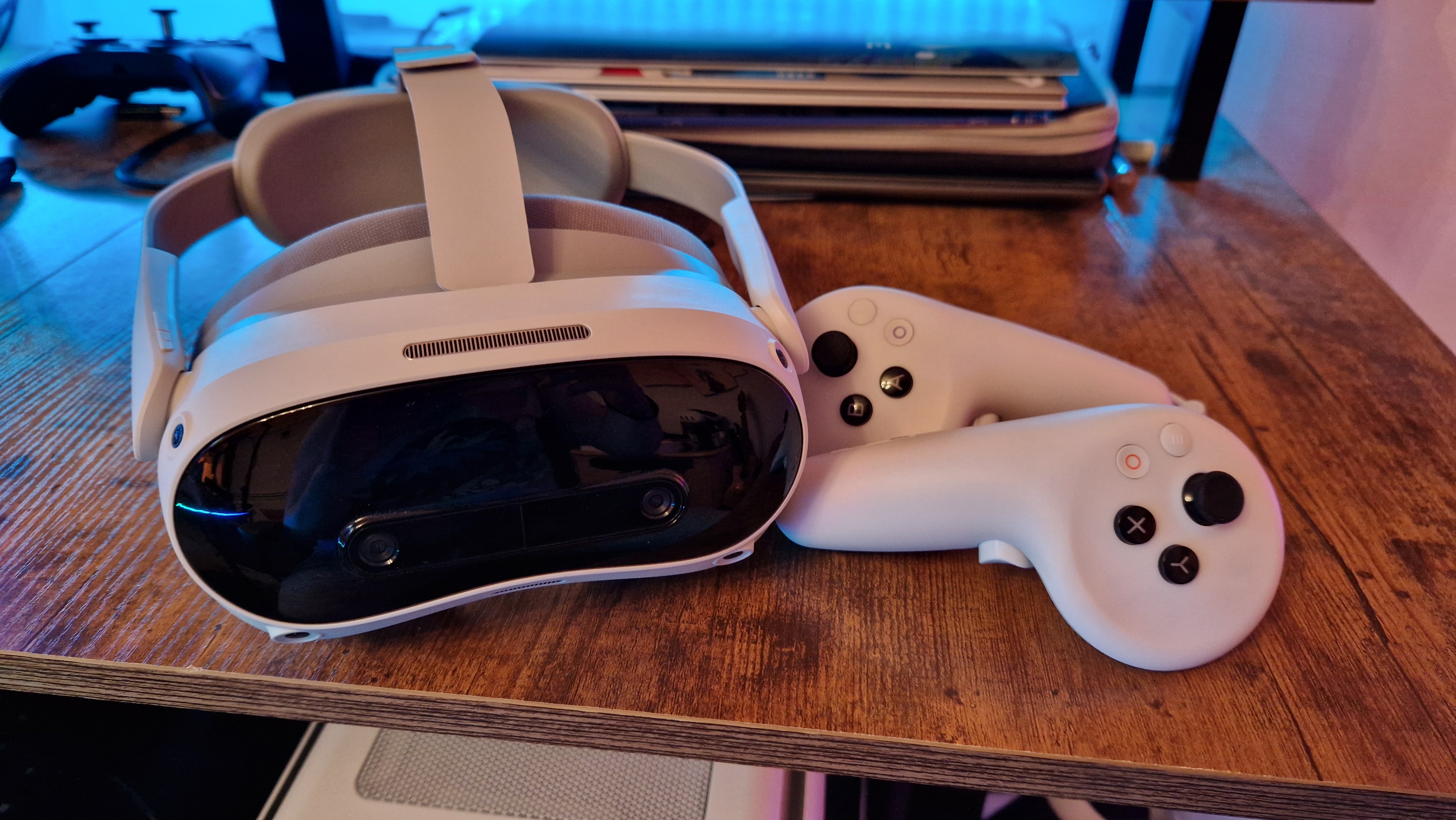You might think that since VR gaming is one of the most immersive genres out there, there are few things that can pull you out of a game and spoil the fun, but I’d argue the opposite. Because VR is so good at putting you in the shoes of a virtual character, it only takes a slight knock to break that immersion entirely. One of the most common annoyances? When a headset and its controllers fail to track where you and your body are.
The Pico 4 Ultra stands apart from a lot of the best VR headsets in that respect, because it launched with motion trackers you can attach to your ankles so that the headset can do a better job of placing you and your limbs in a gaming world. Today, Pico has taken things a step further, launching the Motion Tracker Waist Version, which costs £39.99.
This new tracker is pretty much exactly what it sounds like. It’s a small sensor on a waistband that you wrap around yourself like a belt, and it’ll help your headset keep track of your mid-section when using all sorts of VR apps. When I first read the press release for this new Pico 4 Ultra accessory, I laughed it off a bit. It seems like a silly extra that no one will really need, especially if they already have this device’s other motion trackers. But then I thought about its practical uses, and it started to make a lot of sense.
See, headsets already do a pretty good job of tracking your arms and legs. Don’t get me wrong, sometimes with standalone headsets like the Meta Quest 3 and Meta Quest 3S, controller tracking falls flat on its face, but for the most part, modern headsets do a good job of keeping tabs on your hands. Thanks to movement stick controls, your legs are often taken care of too, and unless you’re fully moving around in a big open space, your legs don’t really need that much tracking in VR games.

What headsets could really use is a better reference point for your mid-section, because a lot of the time they can fail to distinguish the distances between you, your mid-section, and the floor. In VR games this can mean the headset getting very confused when you sit or lie down, since its entire reference for measuring your body works on things like your height. When you’re in exercising apps, this can mean things like burpee movements registering completely wrong, leading to the display bugging out and making you want to throw up. Plenty of VR games use utility belts, so an actual belt tracking where the rest of your body is could help to keep this at an accurate level.
If this proves to be a successful and useful add-on, I could see it becoming a mainstay of VR devices. I understand not everyone will want to throw on a belt to play VR games, but the amount it could add if developers had use of it could be huge. Holstering guns always feels a bit off in VR, so having something that can read your position more accurately could make a world of difference. It would also mean more games that could transition easily between sitting and standing gameplay.

Pico has an amazing VR headset on its hands, and when you square up a fight between the Meta Quest 3 vs Pico 4 UItra, there’s not a lot to decide it. Granted, you’ll need to be in the UK or EU to be able to purchase the Pico option, but it actually has slightly better specs than the Quest 3.
The new motion tracker launches today alongside a new firmware update for the Pico 4 Ultra headset which brings optimizations, AI virtual scene updates, Spatial photo gallery enhancements, and more.
Looking for more VR add-ons? Check out the best Meta Quest accessories. If you’re sticking to flat-screen gaming for now, take a look at the best PC controllers and the best gaming PCs.



